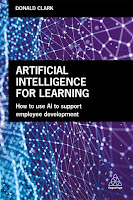Karl Marx wrote a short summary of every book he read and many scholars and successful people refer to note taking as the secret of their success. I once shared a platform with Richard Branson, where he put his entire business success down to his lifetime habit of taking notes. Apart from being dyslectic, he made the simple point that we forget most of the good ideas we come up with, so taking notes prevents forgetting. He attributed almost all of his business ideas and successes to note taking.
I am also an obsessive note taker and have dozens of black notebooks which have helped me learn and plan over the years. I am often astonished, when speaking to large audiences of learning professionals, how few take notes, when the forgetting curve has been established, since Ebbinghaus in 1885, as one of best known and researched pieces of learning science.
Of course, note taking has always been a staple for learners, especially in Higher Education and the research is clear on their efficacy. Generative note taking and the use of such notes significantly enhances learning. Yet, as technology has become more ubiquitous in learning, the ways in which learners can take notes have expanded. In a study of 577 college students, Morehead (2019), it was found that notes were almost always taken, in notebooks and laptops. Smartphones are also increasingly used to grab images of whole slides, useful when graphs and diagrams are presented but also for the main test points. Students often chose different and combined methods for different courses and contexts. Unfortunately, they don’t always know how and when to optimise their note taking.
That brings me to one of the great myths in learning theory, the idea that it has been proven, without doubt, that hand written notes result in greater learning outcomes than typing.
It is an often deeply held belief among educators that, for learners, handwriting is better than typing. You can see why it is so enthusiastically embraced by those who don't really like this pesky new technology, and that good old fashioned pens and pencils trump the computer. But there’s a problem - it’s not true.
The study that got everyone in such a traditional tizz, by Mueller and Oppenheimer, came out in 2014, with the grand title of ‘The Pen is Mightier Than the Keyboard: Advantages of Longhand Over Laptop Note Taking’. This eye catching title got tons of publicity and a willing audience of believers. It is strange how a study is enthusiastically taken up and remembered when it confirms one biases.
Most note-taking literature pre-dates computers, so the study hypothesised that typing led to shallower processing and that typing tended to encourage more verbatim note-taking. In three studies, it compared learners who watched the same TED videos:
Laptop versus longhand performance.
Laptop versus longhand performance (students instructed to avoid verbatim not taking)
Laptop versus longhand performance (study of notes was included before testing)
In all three cases they noted the superior performance on conceptual questions by longhand note takers
But…
Few picked up on the replication study in 2019. In this study, researchers replicated and expanded the earlier work by using the same videos but adding a group that took notes on an eWriter and a group that took no notes. The researchers also tested students on the content of the videos two days after watching to examine the effect of different note-taking styles on retention. In one version of the experiment, they allowed participants to study their notes before the test to imitate more closely how students use class notes to study for assessments.
When it came to conceptual questions, longhand did not outperform typing. Indeed, in one test, the laptop, eWriter and no notes groups actually outperformed the handwriting group on conceptual questions. In general, when learners were allowed to study their notes, all advantages just disappeared for the retention test.
In truth, this study does not prove it either way, as the results seemed to reverse. But the idea that there is a significant difference is not proven.
Then Voyer et al. 2022, a meta-anaylsis that explored the effect of longhand and digital note taking on performance, showed no effect of method of note taking on performance under controlled conditions. It considered 77 effect sizes from 39 samples in 36 articles, showing no effect on note taking approach.
It would seem that writing notes in your own words, and studying your notes, matter more than the methods used to write your notes. This makes sense, as the cognitive effort involved in studying are likely to outweigh the initial method of capture. It is not note taking that matters but effortful learning.
Digital note taking has the clear advantage of being capable of being edited, formatted, stored, printed, searched and transmitted anywhere across the internet and devices. This blog piece is a good example. It also allows tools such as spellcheck and grammar checks to be applied, citations automatically formatted, images and video imported. Not much text is written in longhand these days.
This debate focuses on one issue, the method of note talking but the more important issue is to move beyond note taking to actual learning. Here we know that underlining, highlighting and rereading are not efficient learning strategies. One needs to move towards effortful, generative learning, deliberate, retrieval and spaced practice. Note taking is not an end in itself, merely the start of a learning journey. It is an important bridge to more effortful learning.
Bibliography
Morehead, K., Dunlosky, J., Rawson, K.A., Blasiman, R. and Hollis, R.B., 2019. Note-taking habits of 21st century college students: implications for student learning, memory, and achievement. Memory, 27(6), pp.807-819.
Morehead, K., Dunlosky, J. and Rawson, K.A., 2019. How much mightier is the pen than the keyboard for note-taking? A replication and extension of Mueller and Oppenheimer (2014). Educational Psychology Review, 31(3), pp.753-780.
Mueller, P.A. and Oppenheimer, D.M., 2014. The pen is mightier than the keyboard: Advantages of longhand over laptop note taking. Psychological science, 25(6), pp.1159-1168.




